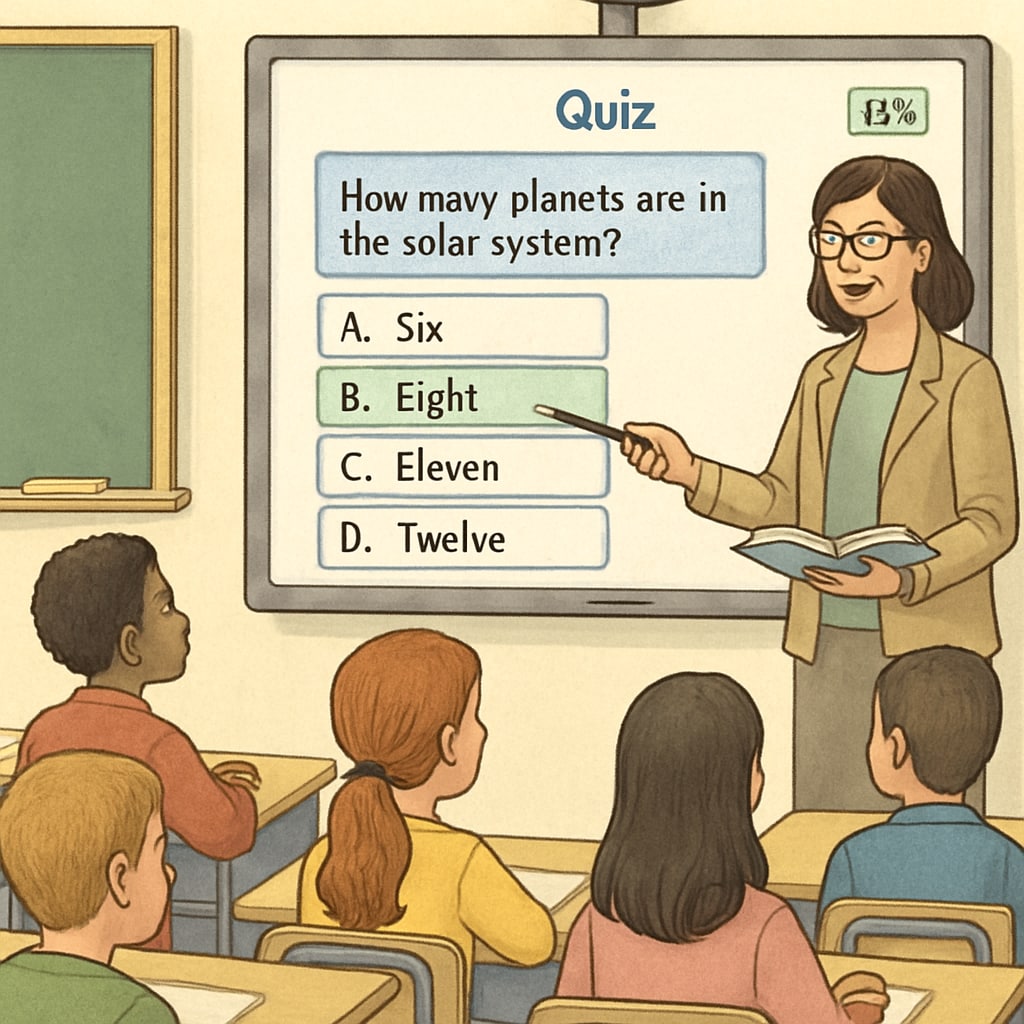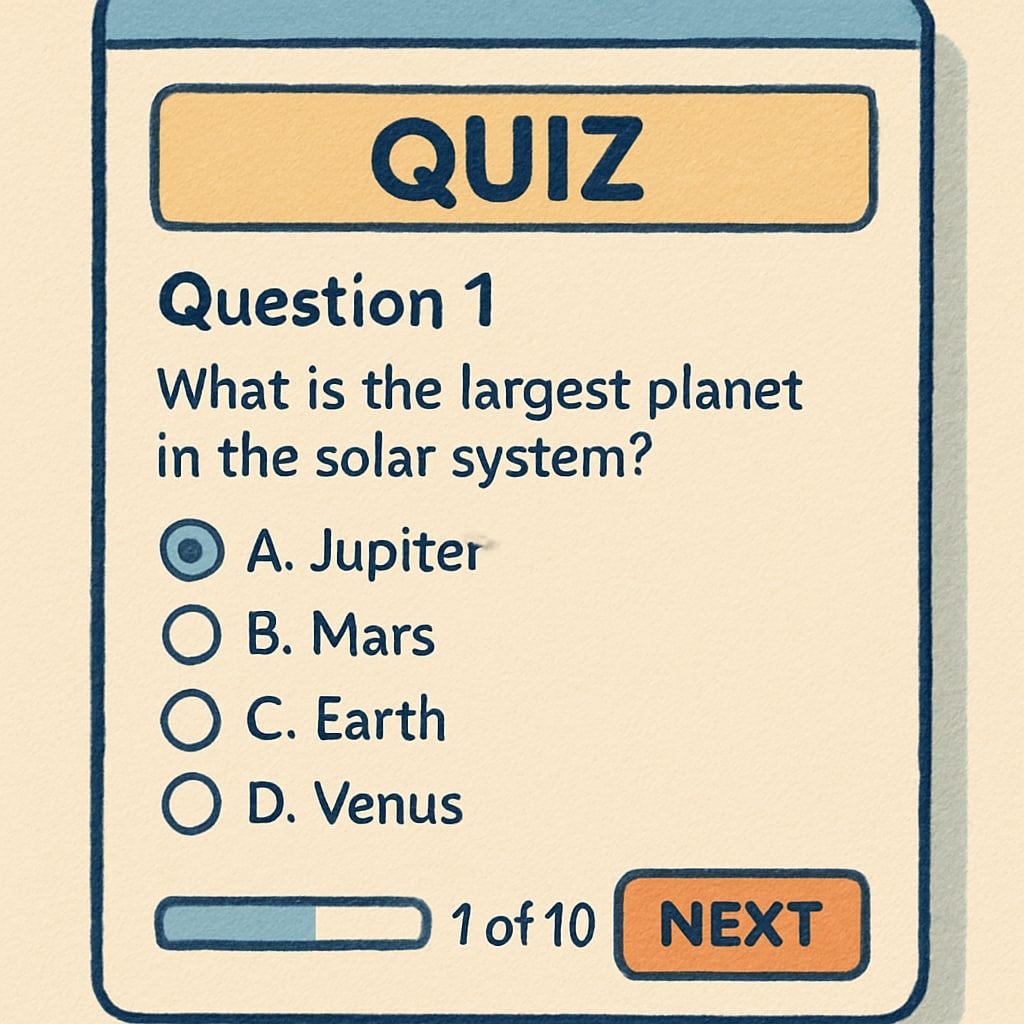Effective quiz resources for students are essential for meaningful assessment in K12 education. These tools not only measure academic progress but also serve as a guide to adjust teaching strategies and foster deeper learning. However, the abundance of available resources can overwhelm educators and parents alike. How can you identify the right tools that align with both educational goals and students’ needs? This article provides insights into selecting high-quality assessment resources to support student success.
Why Quiz Resources Matter in K12 Education
Quizzes play a pivotal role in education, providing a structured way to measure students’ understanding of the material. But their impact goes beyond mere scoring. When thoughtfully designed, quizzes can:
- Reinforce key concepts and encourage mastery of subjects.
- Highlight areas where students may need additional support.
- Promote active recall and long-term retention of information.
For these benefits to be realized, the chosen tools need to be both reliable and aligned with educational objectives. Educators must consider how a resource complements their teaching methods and supports diverse learning styles.

Key Features of High-Quality Quiz Resources
When evaluating quiz resources for K12 students, certain features stand out as markers of a good tool. Here are some critical aspects to consider:
- Curriculum Alignment: The resource should align with state or national educational standards to ensure relevance and appropriateness.
- Customizability: Teachers should be able to tailor quizzes to their specific lesson plans and student needs.
- Engagement: Interactive elements such as multimedia content and gamified features can enhance student participation.
- Data and Analytics: Tools that provide detailed performance analysis help educators identify patterns and tailor their approaches.
- Accessibility: Ensure that the resource accommodates students with diverse abilities, offering features like text-to-speech or visual aids.
For example, platforms like Kahoot! and Quizizz have gained popularity due to their engaging formats and robust analytics features, making them ideal for classroom use. Meanwhile, traditional tools like printable worksheets still hold value in specific contexts.

How to Choose the Right Quiz Resources
Choosing the best quiz resources requires a thoughtful approach. Here are some practical steps to guide your decision-making:
- Identify Learning Objectives: Begin by clarifying the skills or knowledge you want to assess.
- Consider Student Needs: Choose tools that cater to different learning paces and preferences, ensuring inclusivity.
- Test the Resource: Whenever possible, trial the quiz tool yourself to evaluate its ease of use and effectiveness.
- Seek Feedback: Collect input from other educators, parents, and students about their experiences with the resource.
- Review Costs: While many high-quality tools are free, some premium options offer additional features that may justify their cost.
Additionally, educators can explore reviews and recommendations from trusted sources like Edutopia or Common Sense Education, which evaluate educational tools based on usability and alignment with learning goals.
The Role of Teachers and Parents in Resource Selection
Both teachers and parents play critical roles in selecting the right quiz resources for students. Teachers bring their expertise in curriculum design and classroom dynamics, while parents provide insights into their child’s unique needs and learning behaviors. Collaboration between these two groups ensures a holistic approach to assessment and improves the likelihood of student success.
For example, a teacher may choose a resource that integrates seamlessly with classroom technology, while a parent might prefer tools that allow for home practice. By working together, both parties can ensure that the chosen tools are both practical and effective.
Final Thoughts
Finding the “right” quiz resources is about more than just convenience; it’s about empowering students to succeed through targeted assessment and feedback. With careful evaluation and a focus on alignment with educational goals, educators and parents can make informed choices that benefit K12 learners. As the landscape of education continues to evolve, high-quality assessment tools will remain an essential part of student development.
By understanding the key features of effective tools and following a structured selection process, you can ensure that your chosen resources truly enhance the teaching and learning experience.


